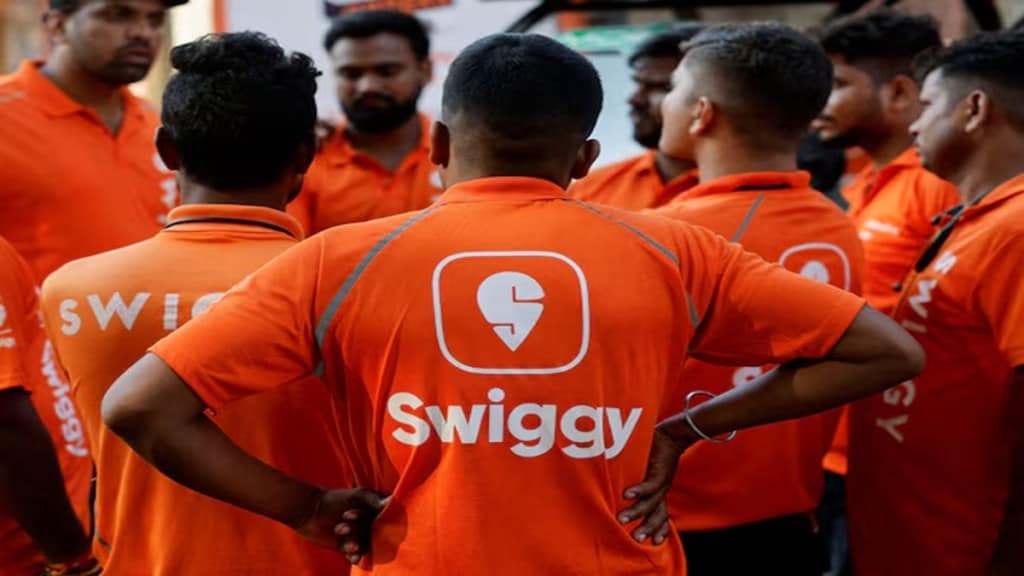Swiggy on Thursday released its fiscal first quarter earnings report wherein it widened its loss to Rs 1,197 crore in comparison to a loss of Rs 611 crore recorded during the corresponding quarter of FY25. However, the company recorded revenue from operations at Rs 4,961 crore, posting a growth of 53.97 per cent as against Rs 3,222 crore recorded during the first quarter of previous financial year.
The food delivery company said that the higher losses were recorded due to scale-driven growth across verticals while reiterating its focus on long-term sustainable profitability. The losses were led by the Quick Commerce division ‘Instamart’, where the losses widened from the year-ago quarter.
Swiggy Platform reported average monthly transacting users (MTU) growth of 35.2 per cent to 21.6 million. The consolidated adjusted revenue went up by 52.7 per cent on-year to Rs 5,308 crore. The B2C adjusted EBITDA margin declined by 204bps YoY to -4.7 per cent. Consolidated adjusted EBITDA loss increased by Rs 81 crore.
Gross Order Value for the B2C business increased by 45 per cent as compared to the last year to Rs 14,797 crore. GOV for the food delivery business increased by 18.8 per cent YoY, while GOV for the quick-commerce business more than doubled, increasing by 108 per cent from last year.
Swiggy Q1 Results: Performance across business verticals
Food delivery
Swiggy’s Food Delivery vertical reported revenue of Rs 1,799 crore during the quarter while EBITDA increased to Rs 202 crore from Rs 67 crore last year. “At 18.8 per cent, we have demonstrated our second fastest YoY growth over the last 9 quarters. Our resilient GOV growth is an outcome of an increase in our MTU base delivered by better execution (especially in Tier-2 cities) and new consumer propositions while expanding our GOV/MTU,” said Sriharsha Majety, Co-founder, MD & Group CEO, Swiggy Ltd.
Meanwhile, Bolt contributed to over 10 per cent of overall Food delivery volumes, while reducing the platform level average-delivery time and last miles.
Majety said that Q1 is seasonally negatively impacted on contribution due to higher investments in delivery cost to manage lower availability of delivery partners (reverse-migration and monsoons). This, he added, was the primary reason for the reduction in contribution margins to 7.3 per cent of GOV. Adjusted EBITDA margins have dipped to 2.4 per cent (-52bps QoQ) as a result of the seasonal reduction in contribution margins, with the remainder being driven by increased fixed expenses due to our annual appraisal cycle which increases manpower costs.
Quick commerce
In Q1, Swiggy’s Quick-commerce segment clocked 108 per cent YoY GOV growth to Rs 5,655 crore. The segment boosted its Average Order Value (AOV) by 16 per cent quarter-on-quarter to Rs 612, surpassing the projected high-teens growth. “This has been driven by our significantly expanded selection driving a higher non-grocery mix in our GOV, and the resounding success of Maxxsaver driving larger baskets through providing better value,” Majety said.
Overall, Quick Commerce posted a Rs 896 crore loss for the quarter, and adjusted EBITDA margin improved to -15.8 per cent from -18.0 per cent.
Out-of-Home consumption
The Out-of-Home consumption segment GOV grew 61 per cent YoY, led by continued success of GIRF and festive event days. This segment is growing rapidly, and the company’s efficient model has kept costs in control. The segment had turned profitable last quarter and continued to expand its operating margins, with an adjusted EBITDA margin of 0.5 per cent.
Swiggy Q1 Results: Dark-store network expansion
Swigy increased its darkstore footprint over H2FY25 to reach its guidance of 4 million sqft last quarter. Swiggy opened around 41 darkstores this quarter and 3 new cities, taking the footprint to 4.3 mn sq ft across 127 cities.
Swiggy Q1 Results: Balance sheet update
Swiggy has Rs 5,354 crore cash and cash equivalents as of 30 Jun 2025. Of the Rs 319 crore capex incurred in the current quarter, it said, about three-fourths was incurred towards warehousing capacity expansion and funding of previous quarter’s darkstore expansion, and the remainder towards darkstore additions (including partial advances for future roll-outs).
“We have front-loaded our network expansion, and have created significant capacity to handle growth. As we calibrate our network expansion and improve warehouse-efficiency, capacity utilisation will improve over this fiscal year, driving down capex requirements incrementally,” Majety said while maintaining that the consistent cash-generation from Food delivery and Out-of-Home segments will continue to keep the balance sheet strong and help further investment into growing the Quick commerce business.


